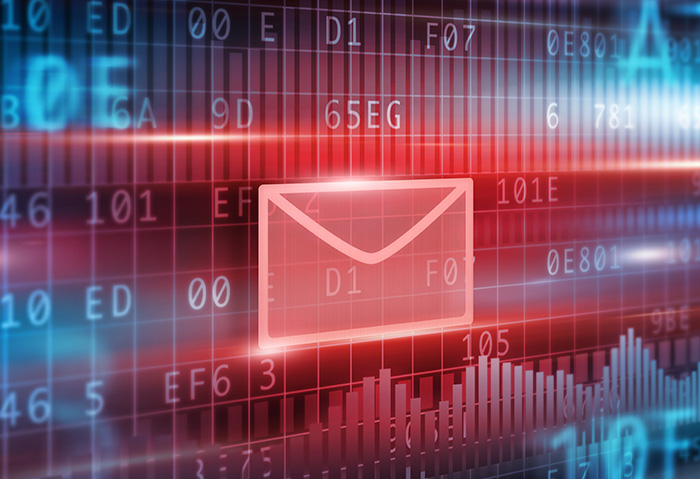An email is a powerful tool in the workplace – it can be used to share information quickly and efficiently, store important documents and stay connected to colleagues. However, it also poses risks of malicious activity and threats from outside sources. The latest email threats include phishing scams, ransomware attacks, malware downloads and other malicious attachments. Businesses need to stay vigilant when it comes to combating these types of threats.
Proper security measures can help protect against email threats, such as phishing emails sent by cybercriminals attempting to access confidential data. Businesses should also ensure they have regular security updates, so their IT systems are up-to-date with the most recent patches and safety upgrades. Additionally, employees should be trained to identify suspicious emails or attachments containing malware or ransomware links.
What is Phishing?
Phishing is an online threat, a form of cyber attack, and one of the most common email threats businesses face today. It occurs when attackers use deceptive emails to trick unsuspecting victims into handing over sensitive information, such as passwords and credit card numbers. Phishing emails appear to come from legitimate sources, but they are malicious.
Attackers craft these messages to look authentic, often using logos or brand names associated with real organisations. To make matters worse, phishers can create convincing domains that look nearly identical to the ones used by their intended victims. By capitalising on people’s trust in familiar brands and companies, these attackers can easily compromise data security and cause significant financial losses for businesses worldwide.
Ransomware and Malware
Ransomware and malware are two of the most severe email threats currently facing companies worldwide. As cyber criminals refine their methods, businesses must remain vigilant to protect against these malicious attack vectors. This article will explain how ransomware and malware work, how they can be identified, and what steps you can take to combat them.
Ransomware is a type of malicious software that restricts access to a computer system until the user agrees to pay a ransom fee. It typically arrives via an email attachment or link that contains hidden code designed to encrypt user data and lock out access until payment is made. Malware is another malicious software designed to steal sensitive data from unsuspecting victims, such as passwords or financial information. It often comes as a fake website, link, or executable file sent as an email attachment.
Best Practices to Avoid Fraudulent Emails
It’s no secret that fraudulent emails pose a severe risk to individuals and businesses alike. The damage caused by phishing, malware, and other malicious activity can be catastrophic. To combat this growing threat, it is essential to understand the latest techniques used by criminals and employ best practices when dealing with email messages.
Vigilance is vital when it comes to thwarting malicious campaigns. This means taking careful note of the sender’s address, researching unfamiliar links before clicking them, being aware of potential scams such as false invoices or requests for personal information, and never opening suspicious attachments. Perhaps most important is enabling two-factor authentication for all email accounts – a system which requires an additional code beyond just the login information to access the account. With these steps in mind, users can remain safe from a wide range of threats from fraudulent emails.
Employee Training and Education
Employee training and education are essential for protecting businesses from the latest email threats. With more organisations utilising email as a primary form of communication, it’s essential to ensure that employees are aware of how these malicious emails spread and how to protect against them. Recent technological advancements have made it easier for cybercriminals to send phishing emails designed to steal confidential information or money from unsuspecting victims. Companies can become vulnerable to these types of attacks without proper employee training.
Organisations should provide ongoing education and training related to email security best practices. This includes teaching employees about recognising suspicious emails, avoiding clicking on unfamiliar links or attachments, understanding the importance of secure passwords and two-factor authentication methods, and staying up-to-date with the latest security updates and patches.
Email Security Solutions
Email security is becoming increasingly crucial for businesses of all sizes as malicious actors become more sophisticated in their attacks. It’s not enough to rely on traditional antivirus and firewall defences, as hackers can now bypass these solutions. To ensure their networks remain safe and secure, organisations must adopt a multi-faceted approach that includes vigilance against the latest email threats.
This article examines the various strategies available to organisations looking to bolster their email security protocols. We will discuss how enterprises can protect themselves by implementing measures such as automating authentication processes, deploying advanced analytics solutions, and encouraging employee education on cyber risks. With this comprehensive approach, businesses can gain better control over who has access to sensitive data and help reduce the risk of significant data breaches.
Conclusion: Remain Vigilant
As technology advances and cyber threats become more sophisticated, vigilance is key to securing personal information. This article looked at the latest email threats, ways to combat them, and why remaining vigilant is essential in today’s digital world. As we have seen, individuals and organisations alike must familiarise themselves with the most up-to-date security measures if they wish to protect their data from malicious intruders.
The best way to detect potential malware or other malicious attacks on a network is to stay informed of the latest security breaches and attack vectors targeting users worldwide. Remaining vigilant by understanding different types of email threats can effectively mitigate risk in any organisation or home environment.
